
Low Magnesium: Your Guide To A Magnesium Rich Diet
Low magnesium or hypomagnesemia and magnesium deficiency is when your body has too low magnesium. This usually means your diet is not rich enough in magnesium. Dietary deficiency usually occurs alongside other mineral deficiencies. Balancing levels of magnesium in the blood is vital. Magnesium plays an essential role in muscle relaxation and contractions.
Low magnesium can heavily disrupt normal functioning of muscles and the nervous system. Low magnesium also increases risk of getting certain diseases. Magnesium is an essential electrolyte and is found in a balance with other electrolytes in the body.
What Does Magnesium Do?
Calcium plays a role with magnesium for optimum muscle movement. While calcium helps muscle contractions, magnesium helps muscle relaxation.
Magnesium is essential for energy production, DNA and protein manufacture. Through interactions with calcium, magnesium alleviates stress. It regulates certain nerve transmitter chemicals, including serotonin.
It is essential for every cell and therefore low magnesium must be corrected with a magnesium rich diet. The best way to improve levels of magnesium in the blood is through consuming a magnesium rich diet. When working towards a magnesium rich diet, it is important to balance the other electrolytes that work with magnesium in the body.
You can of course supplement with magnesium to improve magnesium levels in the blood however, it is preferable to obtain minerals from your diet. You absorb about 40% of the magnesium that you ingest through the intestines.
Most absorbed magnesium is found in the cells of your body tissues and is not detected by normal blood serum tests. Around half of the States population consumes less than the daily recommended amount. Which is why you might be finding yourself low in magnesium. Levels of blood serum magnesium should be in concentrations of between 0.75 and 1 Millimole per Litre.
Many blood tests may not pick up on minor deficiencies in magnesium. If you have had a blood test with low serum magnesium it is strongly suggested that you address this.
Here we will cover the best food all foods for magnesium to work towards a magnesium rich diet, magnesium supplements, side effects of high magnesium, how magnesium can influence weight, heart rate and depression.
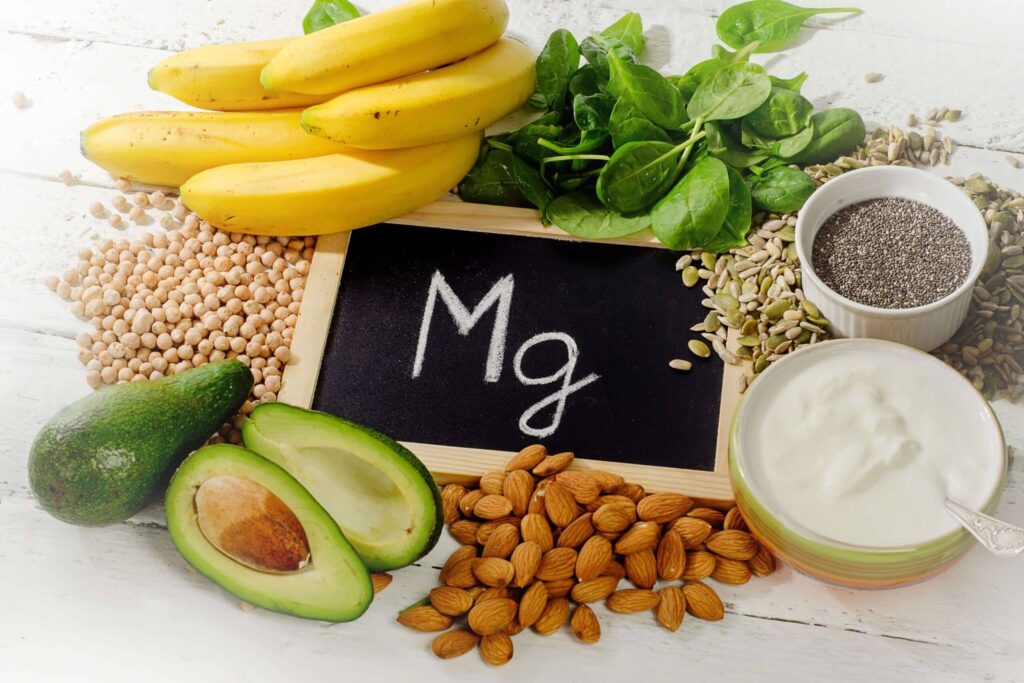
Best Foods for Magnesium: 6 Magnesium Rich Foods
cashews: Magnesium Content
Found in Cameroon, cashew nuts contain one of the highest amounts of magnesium in the plant Kingdom. They have a stunning 260 milligrams of magnesium per 100 grammes of cashew.
This is a very popular food to introduce to achieve a magnesium rich diet.
Cashew nuts are one of the best foods for magnesium rich diets, simply because they are rich in magnesium, are readily available in the shops and are not so expensive.
You can integrate cashew nuts into various recipes such as nut-based stir fries, curries and desserts. If you’d rather just snack on them, they also come in smaller snack sizes.
All you need for a simple Thai cashew curry is a small amount of chicken, some chillies a bag of cashew nuts tomato paste garlic and cooking oils or butter.
Throw all of that into a walk with some egg noodles and you’ve got yourself a 15 to 20 minute meal. That is perfect for people on the go.
It is important to have balance in your diet and cashew nuts help with the magnesium rich dietary intake but also contain vitamins, minerals and amino acids.
Cashews contain high levels of copper, phosphorus and zinc too.
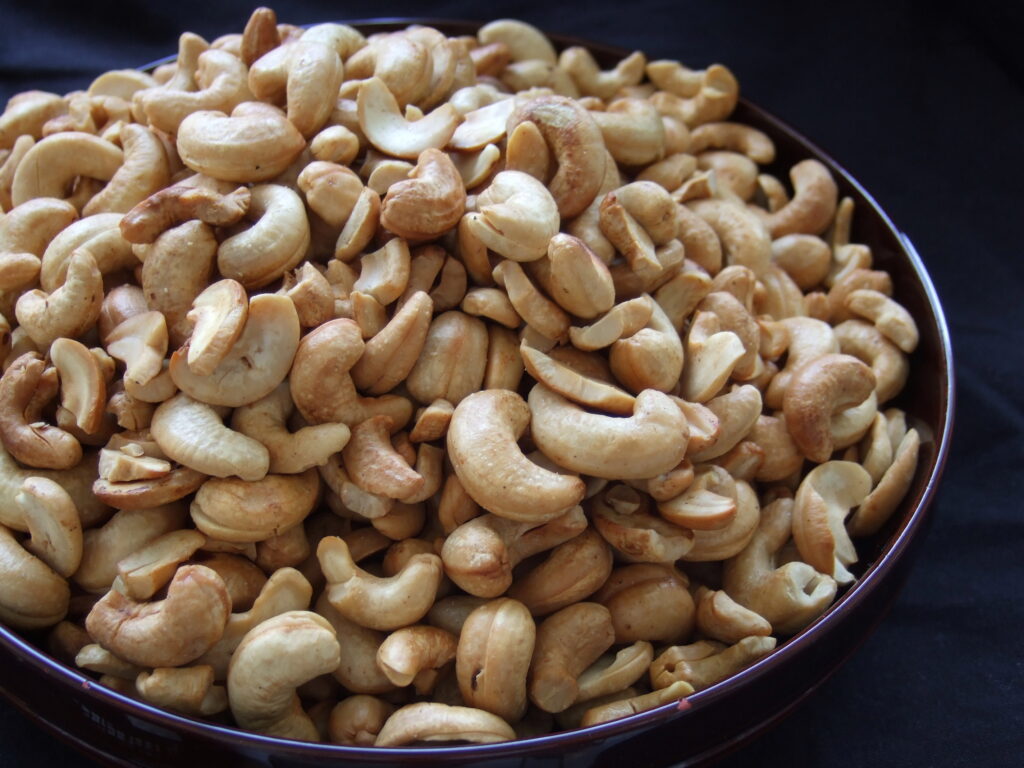
Peanuts: Magnesium Content
Peanuts and peanut butter are an excellent source of nutrition. Originally from South America, peanuts contain abundant amounts of magnesium.
While not as rich in magnesium as cashew nuts, they do contain a lot of magnesium.
Peanuts contain approximately 176 milligrams of magnesium 100 grammes of peanuts. Peanuts are also rich in amino acids that help with muscle growth and formation. While also being a source of copper and manganese.
This is a popular food eaten as a snack or integrated into a food recipe.
As with Cashews this can be integrated into a Spicy Thai Curry. Popular Asian cuisines use peanuts and create a smooth sauce to be eaten with kebabs and rice.
You can make a soup with added kale or spinach and again some seriously tasty peanut butter-chocolate and honey drizzle deserts.

Walnuts: Magnesium Content
Walnuts are another type of nut particularly high in minerals such as zinc, potassium and magnesium.
Magnesium levels in walnuts were measured to be 140 milligrams of magnesium per 100 grammes of walnuts.
They’re easy to use as a snack, being a dry food, so can easily boost the magnesium content in your diet.
You can also make walnut pesto and integrate it into your next pasta dish. Just add chicken, avocado, some large parmesan flakes and you’ve got yourself your next meal.
You could even put some whole walnuts in there.
Walnuts are rich in fatty acids and essential amino acids just like peanuts. They also contain specific polyphenols that carry antioxidant abilities.
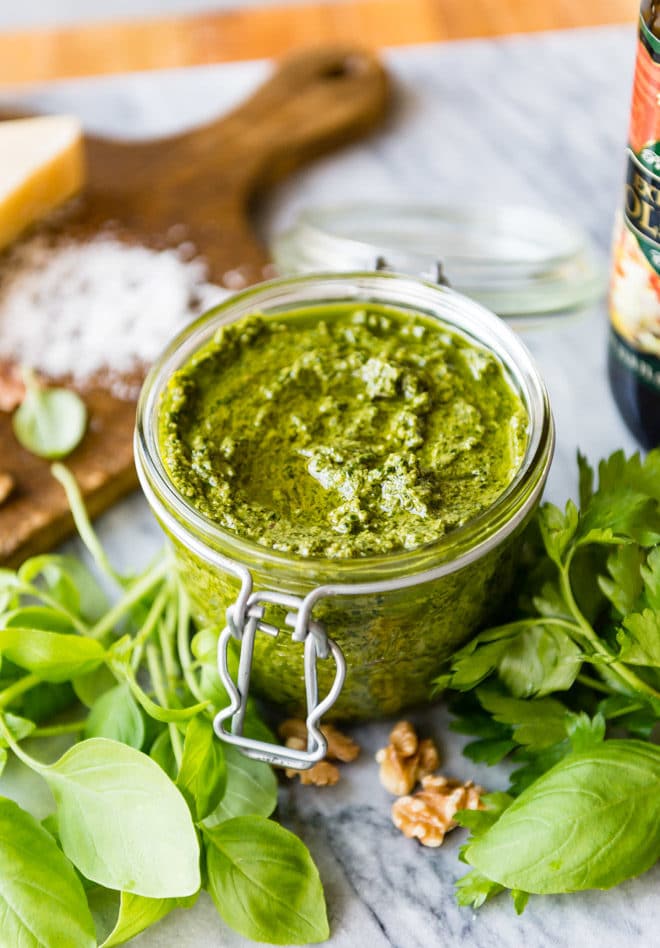
Avocado: Magnesium Content
Native to Mexico, avocados are really popular fruits. They contain high levels of nutrients they are difficult to obtain.
Avocado is rich in healthy fats, choline and amino acids such as tryptophan that are crucial to forming certain hormones and cell membranes.
Avocados are also rich in magnesium and can help restore balanced magnesium levels. Avocados contain 29 milligrams of magnesium per 100 grammes of avocado fruit.
In terms of restoring levels of magnesium from previously low levels, this is not as capable as cashew nuts. However, this is a very nutrient dense food providing a decent amount of dietary magnesium.
Avocados can be used in various recipes such as tomato based green salads, drizzled in olive oil, used as a side to most simple chicken dishes and eaten as a standalone snack.
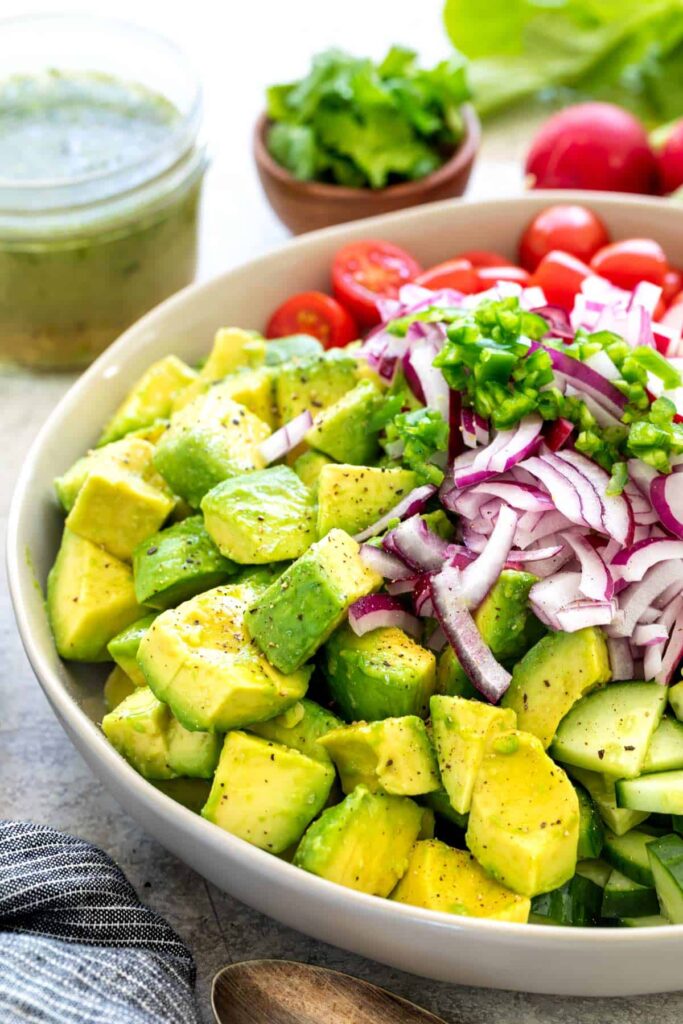
Chia Seeds: Magnesium Content
Chia is a brilliant source of iron magnesium and B vitamins. Other than encouraging a magnesium rich diet, chia seeds contain high levels of antioxidants and can be seen to be beneficial for cardiovascular health.
There is a staggering 350 milligrams of magnesium per 100 grammes of Chia seed. In addition to almost 550 milligrams of calcium. This is really quite impressive.
Chia seeds therefore offer a great combination and balance of magnesium and calcium that could help support healthy muscle function.
Chia seed is a is a cereal like food, you can have raw chia as a porridge in the morning who is part of an exotic dessert. It is a bit more difficult to include chia in your diet, than say for example avocado or peanuts.
Personally, I might recommend using chia seeds as a thickener for sauces.
You can literally add chia seeds to any runny sauce, like four cheese sauce, to bulk the sauce out and add to flavour. You can add herbs like parsley to build on flavours.
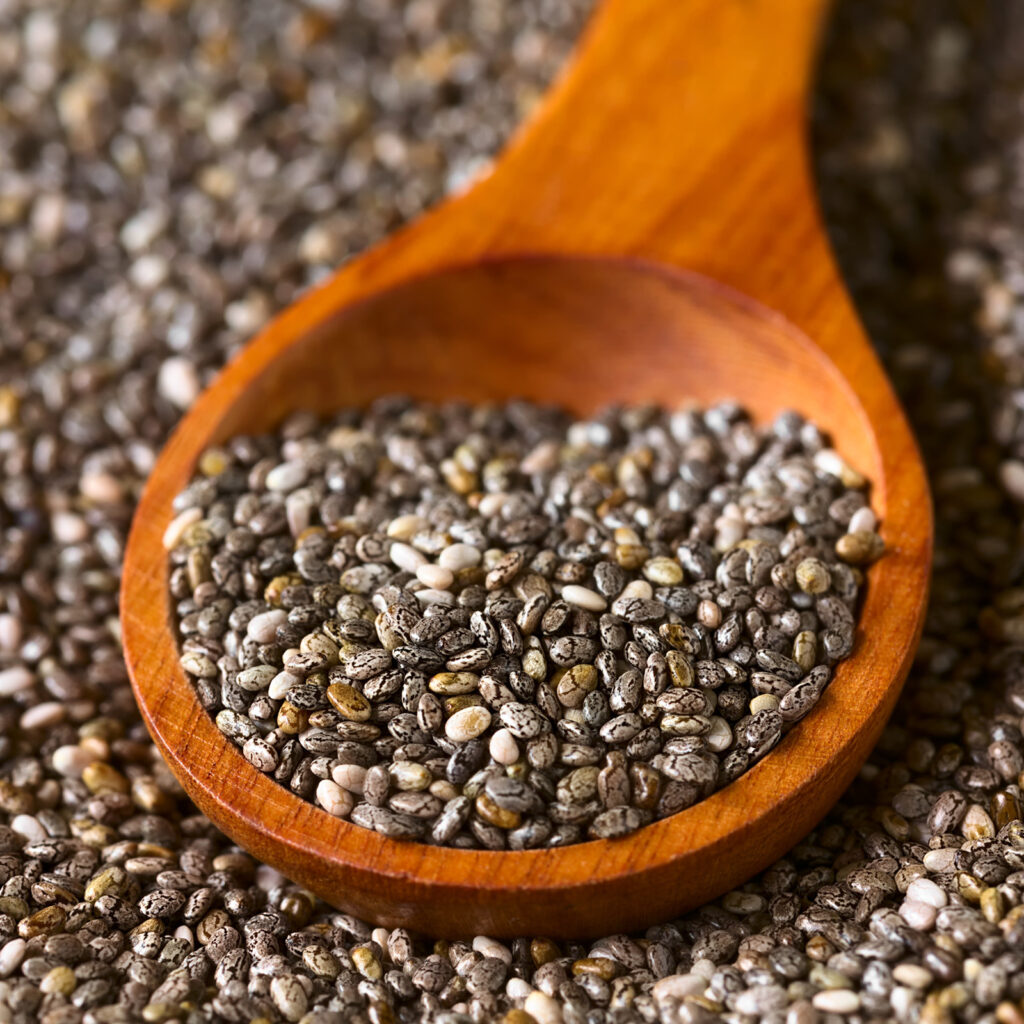
Spinach: Magnesium Content
Spinach is my favourite leafy green vegetable. It makes a salad with actual substance. Because spinach spends so long in the sun, it is blessed with a spectacular green colour from chlorophyll.
Naturally this is where minerals, including magnesium and iron, are found in abundance.
Spinach contains 79 milligrams of magnesium per 100 grammes of spinach leaves. Traditionally, it has been known as a plant to supply iron and is packed with many essential nutrients.
If you haven’t tried Greek spinach pie, called spanakopita, then you really should. Other ways to integrate spinach into meals include spinach stir-fry, salads or pasta dishes.
You can literally squeeze spinach into any meal and get away with it.
If you’re feeling ambitious you could also combine a couple of the foods mentioned into a blender such as spinach, cashew nuts and chia seed.
You could mix them with cucumbers for juice water retention, blueberries and strawberries to make a very nutritious smoothie.
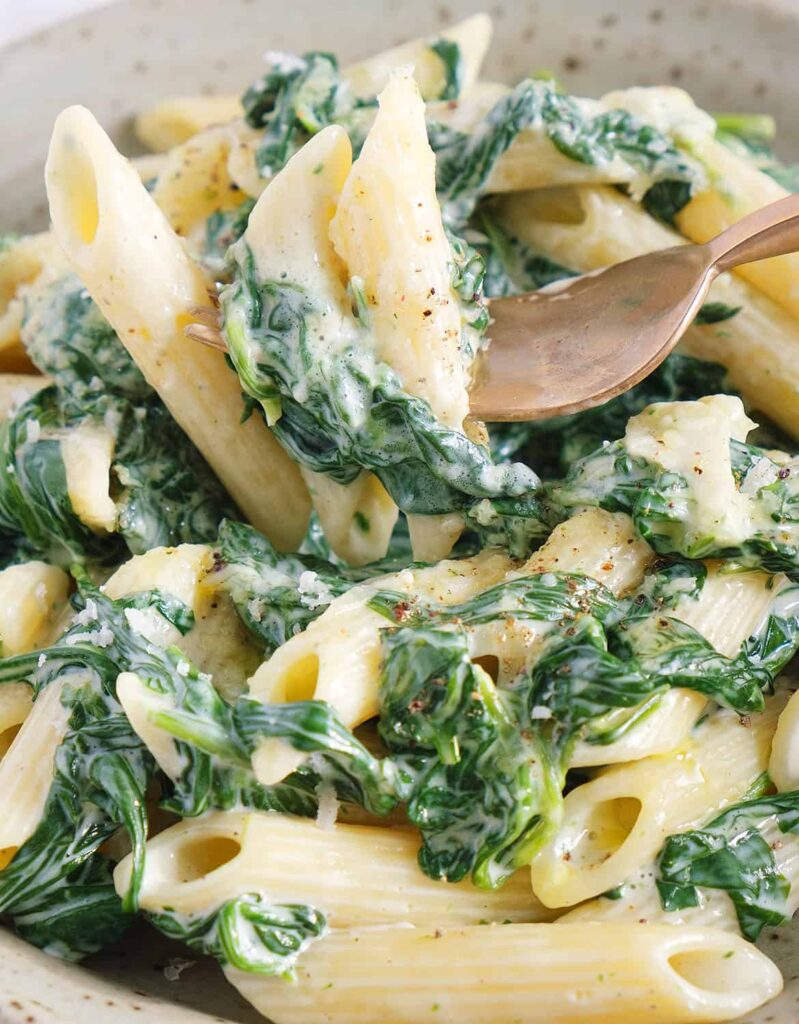
Magnesium For Depression
Magnesium and depression are possibly interlinked. Studies are showing that magnesium influences the signalling pathways that affect depression.
While we can’t just say you can use magnesium for depression, we can show how it could be useful.
There are a couple of chemical pathways in the brain where magnesium might have direct influence for depression. These still need to be investigated but initial research is quite promising.
For example, glutamate nerve transmission has been linked to magnesium levels. This is how magnesium could influence a key depression pathway.
One study showed that when 8000 participants were consuming less than 180 milligrams of magnesium a day, there was a higher likelihood of developing depression.
Magnesium and Heart Rate
Diets rich in magnesium and other nuts are associated with lower risks of cardiovascular disease.
Lowered magnesium levels in the blood have been heavily associated with calcification of blood vessels and development of cardiovascular disease.
This would suggest higher levels of magnesium encourage normal blood pressure and a regular heart rate.
This might be because of the partnership that magnesium and calcium have in muscles of the body, including the heart.
Magnesium promotes normal blood pressure and regulates blood the sugar levels. This contributes to a more regular and also more normalized heart rate.
Magnesium Liver and Kidneys
Eating a diet including cashew nuts, reduced gallstone formation by 25% in a 20 year study.
Magnesium is thought to be quite important throughout the lifespan of the liver including regeneration of liver tissues, being involved in regulation.
Magnesium has been seen to reduce inflammation and oxidative stress in the kidneys, promoting kidney health.
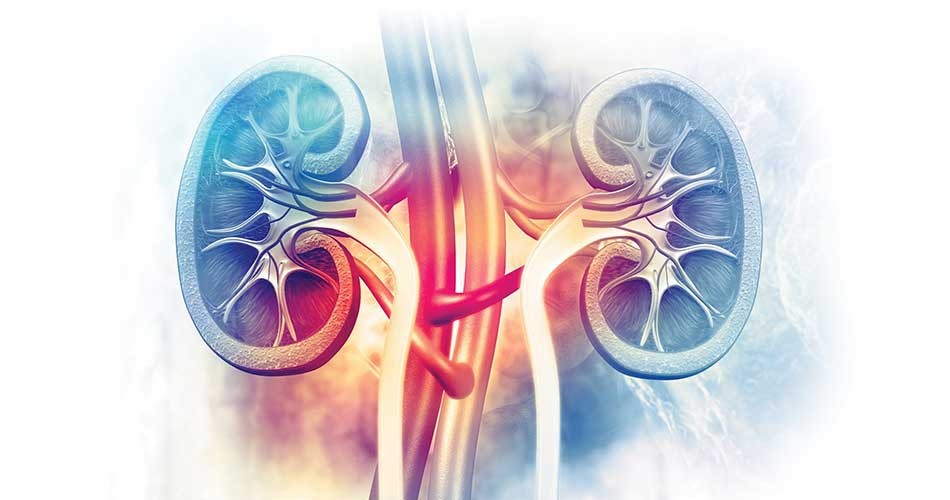
Low Magnesium Treatments: Sulphate of Magnesium Supplements
Magnesium can easily be supplemented for and should be taken as directed by the manufacturer.
As mentioned, magnesium is usually taken in conjunction with an amount of calcium to avoid imbalances that can affect the muscles and heart.
Some usual magnesium supplements include magnesium oxide, citrate and sulphate. The sulphate form is considered to be a lower quality supplement than citrate form.
Side Effects: High Magnesium & Maximum Magnesium Per Day
Side effects of magnesium are rare. If experienced, they are like the side effects of Vitamin C and other diuretics. Suggested doses are around 400 milligrams.
As measured in the blood, overdose starts at levels of 2 milligrams/dL.
Magnesium overdoses can cause various symptoms including diarrhoea and watery stools.
Signs of overdose early on are blurred vision, weakness and dizziness. In the most extreme cases you can have a heart attack or experience paralysis.
Side effects can be avoided by following the manufacturers’ instructions. It is important to balance calcium and magnesium levels. In hospital, calcium is used sometimes to help ease symptoms of overdoses in magnesium.
Conclusion
Magnesium is a mineral that is vital your health, including normal muscle function and energy production. It’s not very difficult to obtain either.
There are all sorts of exotic foods and recipes you can try to encourage a magnesium rich diet.
Deficiencies in magnesium a very common, more common than people are led to believe.
Of those mentioned chia seeds and cashew nuts are the foods that are richest in magnesium. The quickest way to integrate these into your diet are stir fry recipes.
Magnesium is thought to be able to protect normal liver and kidney functioning. It has also been linked to positive mental health outcomes.
Magnesium also influences heart functioning, with reduced outcomes of cardiovascular disease and stabilized blood pressure.
These facts maintain the importance of magnesium to your health and wellbeing.
For more articles, follow the link below.





